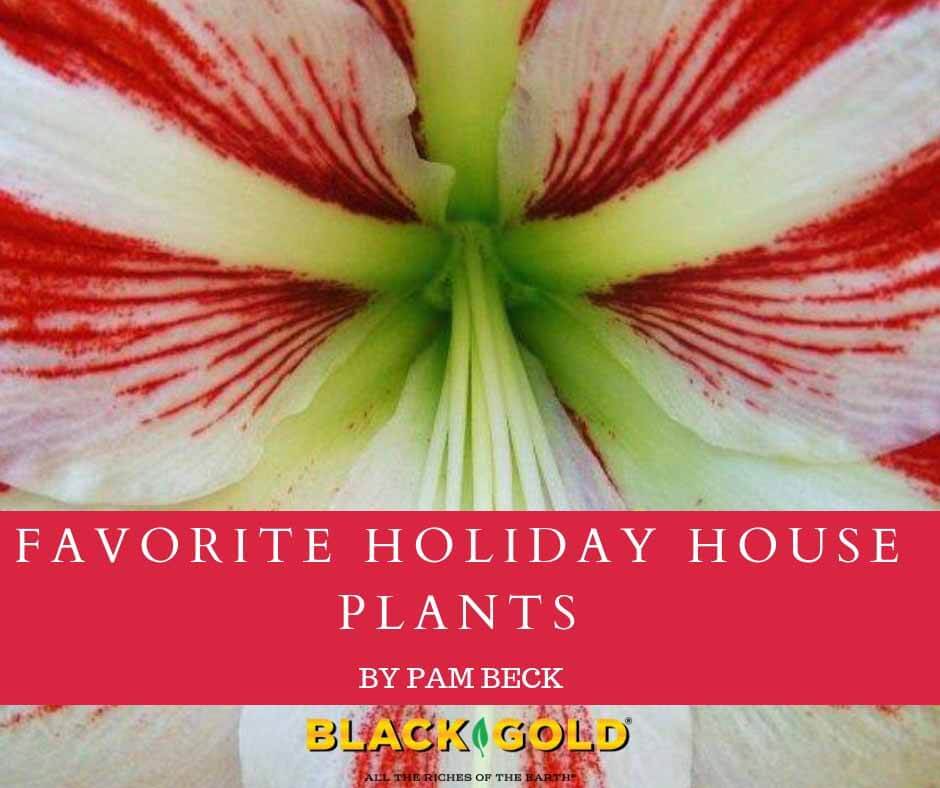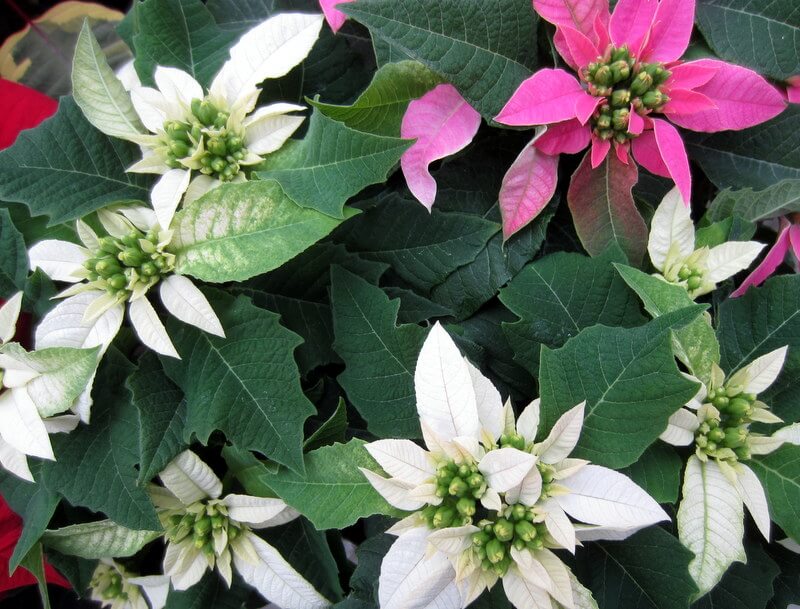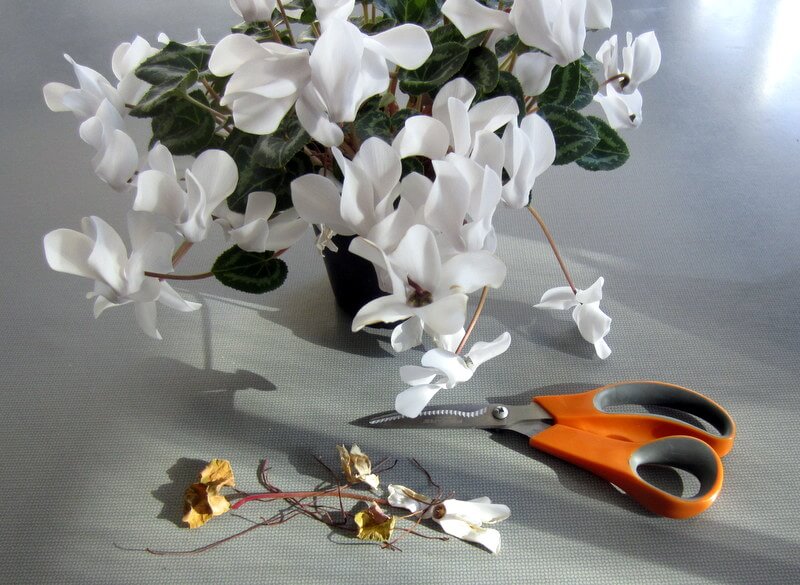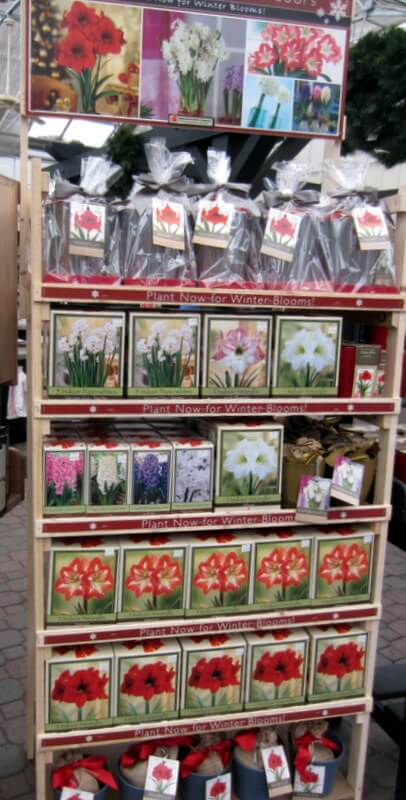
Stumped about what small token of appreciation to take to a holiday open house, a close friend’s party, or your annual family gathering this festive season? Consider gifting the host and hostess with a traditional winter-flowering houseplant as a long-lasting reminder of your thoughtfulness.
One of the most popular holiday houseplants associated with our wintertime holidays is the colorful Poinsettia, named in honor of South Carolinian, Dr. Joel Roberts Poinsett (1779-1851), the first United States Minister to Mexico, who sent their native shrubby Flor de Noche Buena back to the States in 1825, where this colorful spurge was enthusiastically grown and shared.

Poinsettias
Its scientific name is Euphorbia pulcherrima, which means “most beautiful”, as poinsettias are indeed stunning. Wide serrated leaves called bracts surround clusters of unassuming flowers at the center of each leaf bunch, and it is these dramatic bracts that turn deep red, pastel pink, bright white, warm salmon, or variegated as nights grow longer and the temperature drops.
When choosing a gift poinsettia, select a plant that doesn’t appear spotted or wilted, and one that has a good overall shape (as euphorbias are extremely brittle, so will break easily if mishandled). Also, choose a plant that hasn’t completely changed bract color and whose true flowers are not yet spent. Keep your potted poinsettia warm when transporting it home or to its final destination to ensure its best survival and long term handsome appearance.

Poinsettia Care
Poinsettias are easy to care for if you remember that they prefer bright light, but not direct sunlight; that you should moisten their potting medium as soon as the soil surface feels dry to the touch, but do not allow them to sit in water; and, that these plants prefer consistently warm indoor temperatures ranging between a high of 74 degrees F to no cooler than 60 degrees F at night.
There are euphorbias that are poisonous to humans, but the poinsettia isn’t one of them. Do remember that its milky sap may cause a dermatological reaction for extremely sensitive people. And, you will want to take extreme care around indoor pets, who may be tempted to chew these plants, as the poinsettia is on lists of plants that can potentially harm small animals.

Florist’s Cyclamen
Another darling of the winter interior plantscape is the popular florist’s Cyclamen persicum. These cheerful, compact, low-growing plants have extremely decorative leaves and send up myriads of backswept flowers that hover just above the foliage. Their naturally rounded habit makes them perfect centerpieces for holiday tables.
Growing Florist’s Cyclamen
These winter-flowering plants do well arranged near large windows as cyclamen thrive in cool rooms that do not get above 68 degrees F during the day, yet can drop down into the 40s—50s at night.

Do water them before they wilt, as soon as the potting soil surface feels dry. Since cyclamen are grown from a rooting base called a corm, it is essential to keep water out of the center to keep the corm from rotting. This can be done by sitting a potted cyclamen in a shallow bowl of water for 5-10 minutes, allowing the water to wick up into the potting medium, then removing the pot from the water bath to allow any residual water to drain off before finally returning the cyclamen to its place of honor.
A trick that I had to learn the hard way is that it is best to remove spent cyclamen flowers with scissors. If you pull the stem of a fallen flower or a spent leaf, you may tear the plant’s tuber. A quick clean up about once a week usually is all the time that it takes to keep these delightful plants looking their holiday best.
Amaryllis
Finally, the grand queen of holiday plant gifts has to be the amaryllis (Hippeastrum hybrids). Tall, regal, and always a conversation piece, these amazing tropical-looking houseplants can be gifted already flowering or as large bulbs brimming with potential.

Growing Amaryllis
If you share an amaryllis bulb as a present, consider adding an appropriately-sized decorative pot along with some quick-draining potting medium, such as Black Gold All-Purpose Potting Soil with RESiLIENCE®. Your container should be close to the size of the bulb, leaving only a ½-inch to an inch of space inside the container at the broadest point of the bulb. Add enough soil to cover and secure the bulb’s roots, then continue tucking soil up the side of the bulb stopping somewhere between the broadest diameter of the bulb to just below its neck.
A newly planted amaryllis bulb only needs bright light to begin sprouting, but it should be moved into full sunlight as it stretches in order to avoid becoming too leggy. And, water sparingly while the bulb is sprouting to prevent rotting the bulb.
If you choose an already budded amaryllis as a present, encourage its new owner to keep it out of direct sunlight in order to preserve the elegant bloom for a longer period of time. (Watch the video below to learn more about growing amaryllis.)
While you are picking up a choice holiday plant for family and friends, remember to be kind to yourself and be sure to take home one or two green presents for your own enjoyment.
